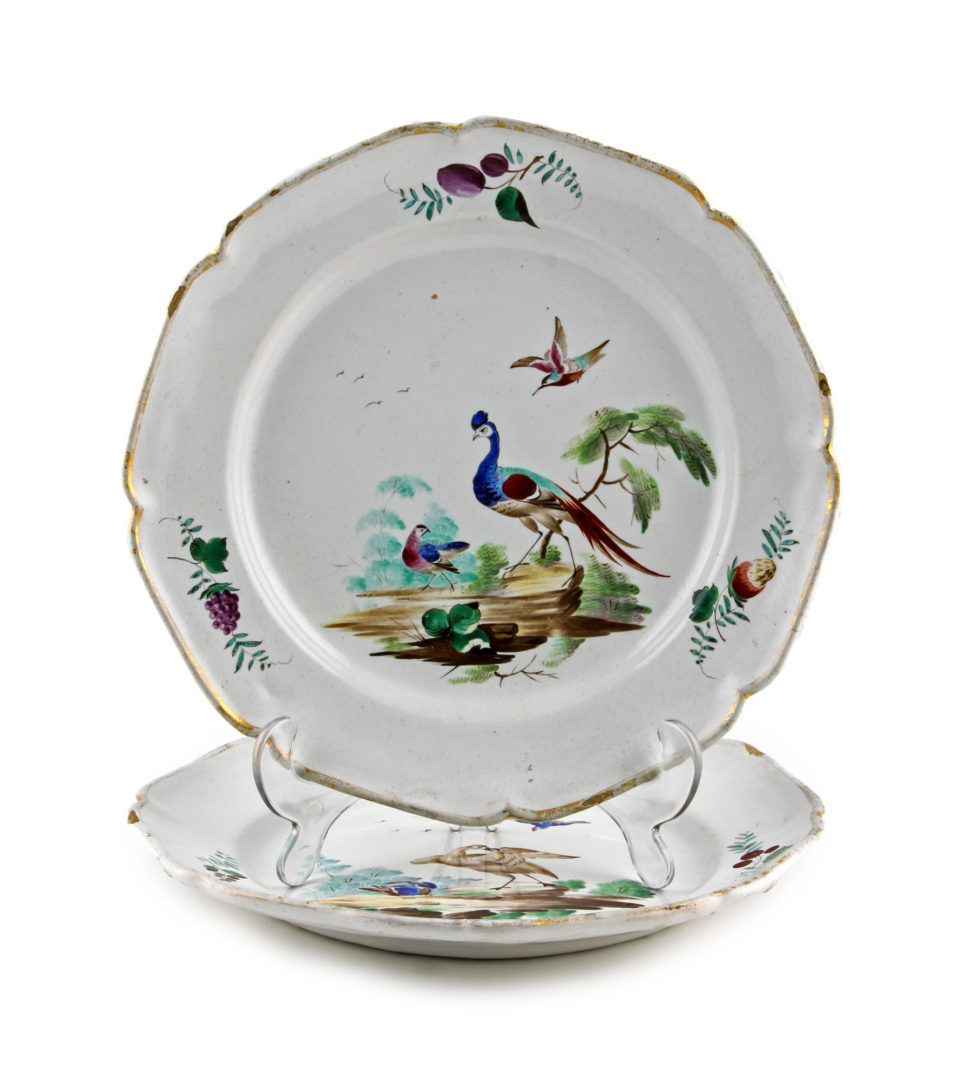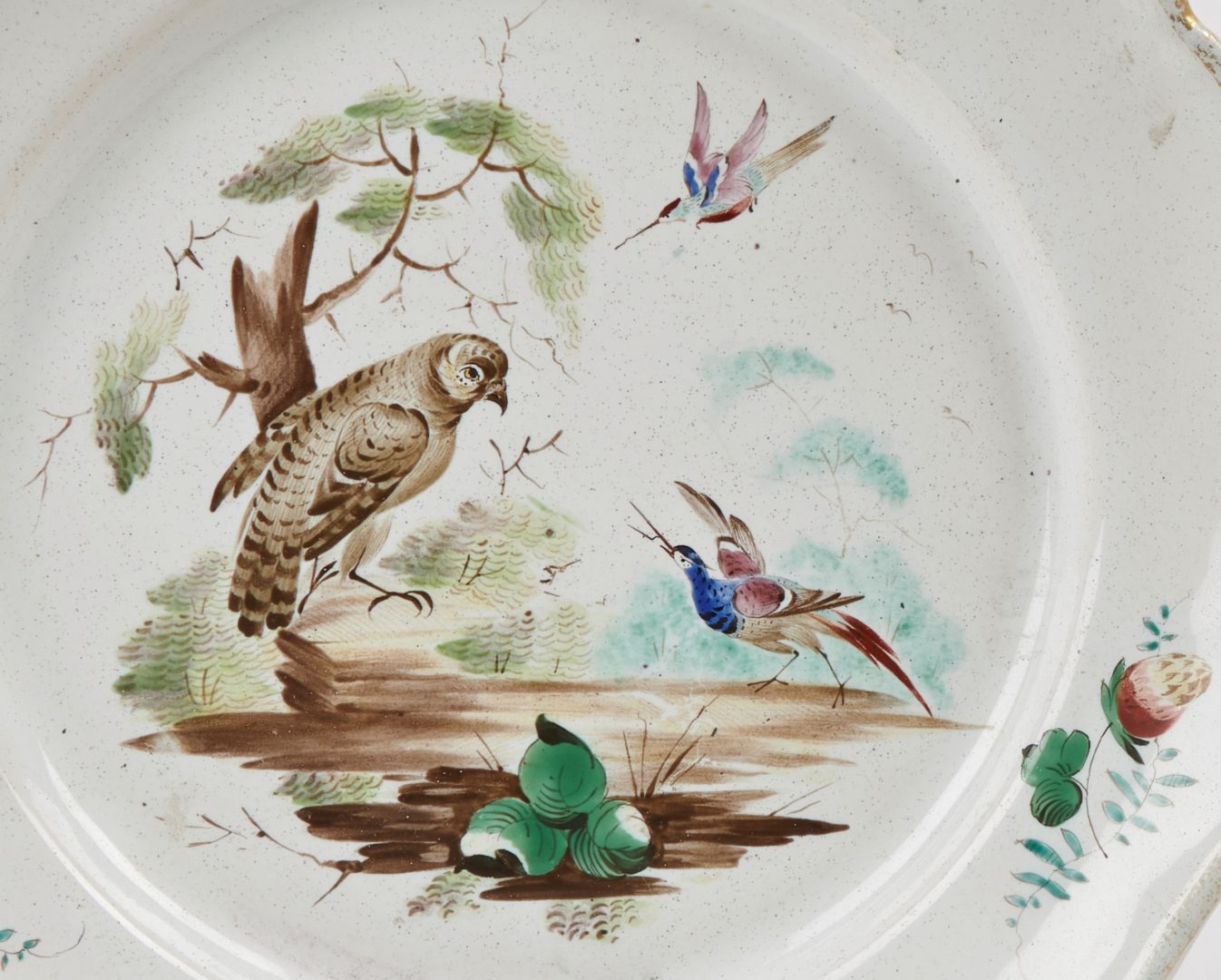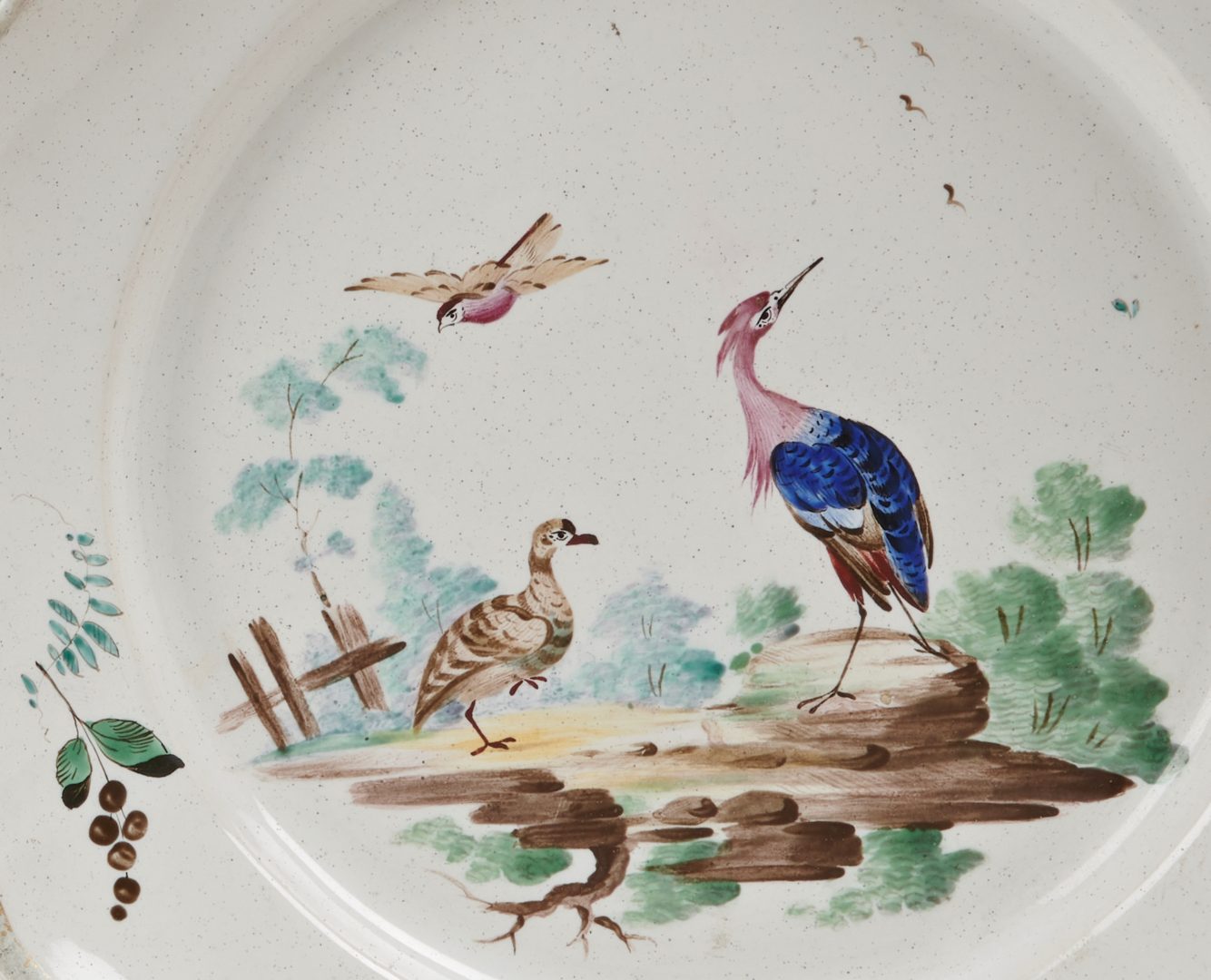1a, 2a Two eight-lobed Sceaux faience plates decorated by Fidelle Duvivier in petit feu enamel colors, ca. 1766-68, showing what appears to be a European Buzzard Hawk (left) and a European Grey Heron (right), among other species. Traces of gilding on the edges. Diam. 24 cm. Photo: Pescheteau-Badin, Paris.
Last year two more Sceaux faience plates with bird decoration by Duvivier (1a, 2a) were auctioned in Paris(i), and both would have belonged to a service already featured in a previous blogpost (“Identifying Duvivier’s birds on two Sceaux faience plates” from May 24, 2017). The first two plates (shown again in 3a below) illustrated a different technique of rendering vegetation in a much more fluid style, which we see Duvivier has used here as well. Added to the swan and a stylized peahen on the first two examples, we find two more species: a European Buzzard Hawk and, most likely, a Grey Heron, both standing on rocks.
3a, 3b The first two plates of this faience service identified as Duvivier’s work (see blogpost of May 24, 2017). At right (3b), a detail showing the same style of vegetation found on all pieces. Photo: Piguet Hôtel des Ventes de Genève, Geneva, Switzerland
3b
In the detail images of these two new plates (below) we see several typical characteristics encountered before in Duvivier’s decoration; for example, the arc of dots beneath the eyes (cf. 3b and 1c), as well as the rendering of the thigh feathers over the leg joints.
There is noticeably more drama in these scenes: the first one (1b) shows two long-billed birds very upset by the presence of the hawk – one is squawking and flapping its wings while the other is taking aim at it with a nose-dive from above. The hawk seems to be assessing the situation still: it has only started to raise its wings slightly.
1b
On the other plate (2b) a stately Grey Heron stands and looks at other birds flying in the distance (Duvivier has given it a rather pink head and neck). The lower portion of the scene shows water with rocks and the vegetation reflected. A smaller waterfowl cautiously lifts one foot as it observes the heron. Another bird glides down – perhaps to have a drink at the water’s edge.
2b
The simplified backgrounds with the “wafer-like” leaves on the trees(ii) do not detract from the compositions – they actually serve to sharpen the focus on all of these feathered subjects.
Hopefully more examples of this unusual service will come to light.
NOTES
(i) From the auction Céramiques Européennes, October 19, 2018, Pescheteau-Badin, Paris, lot 201: “Sceaux -Deux assiettes à bord contourné en faïence à décor polychrome d’oiseaux sur terrasses et fruits sur l’aile. XVIIIème siècle. D. 24 cm.”
(ii) See In the Footsteps of Fidelle Duvivier, pp. 36 and 52 for examples of wafer-like leaves in vegetation that Duvivier painted on Sceaux soft-paste porcelain during his second stay there.
1c






